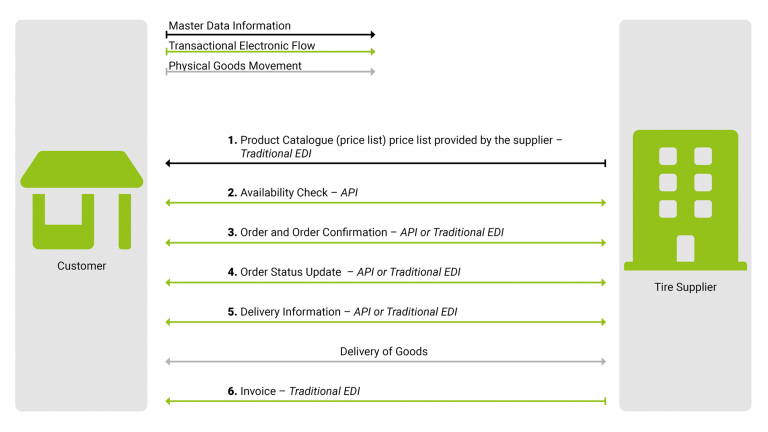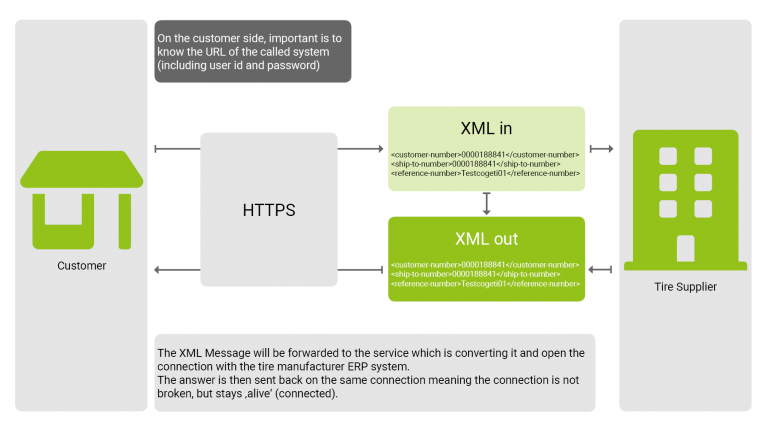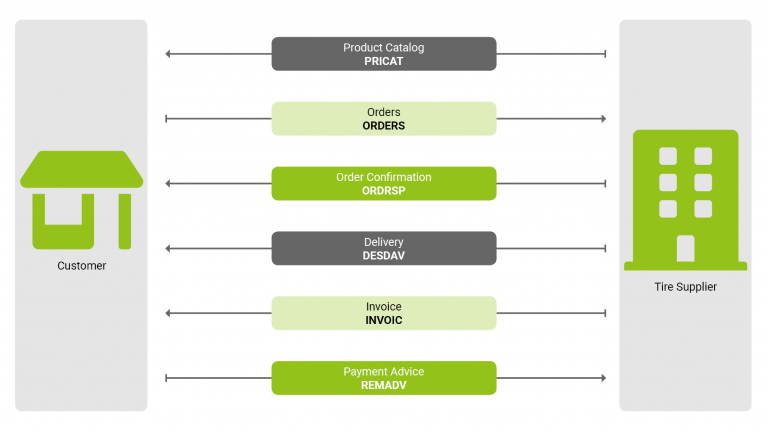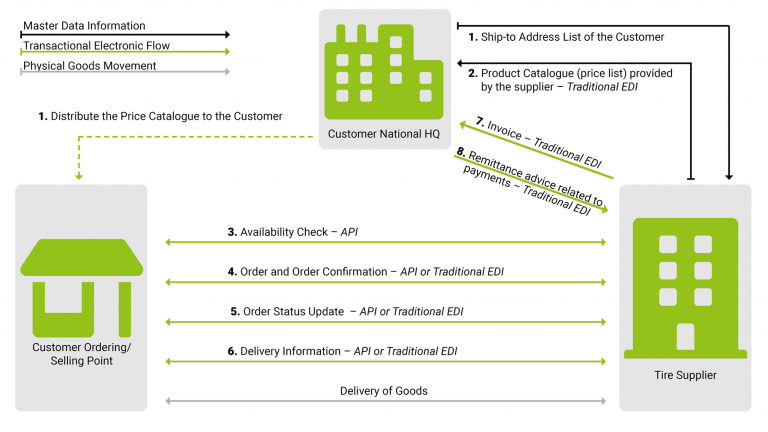Data Process Flow
General Data and Goods flow within the EDIWheel standards
Connection between customer and supplier
A connection between customer and supplier can be set up directly between both parties, or with a software provider in between who is coordinating the integration and keeps master data up-to-date. Within EDIWheel it is possible to combine both messages, API and Traditional EDI, for the same business integration between customer and supplier.
API (Real-time)
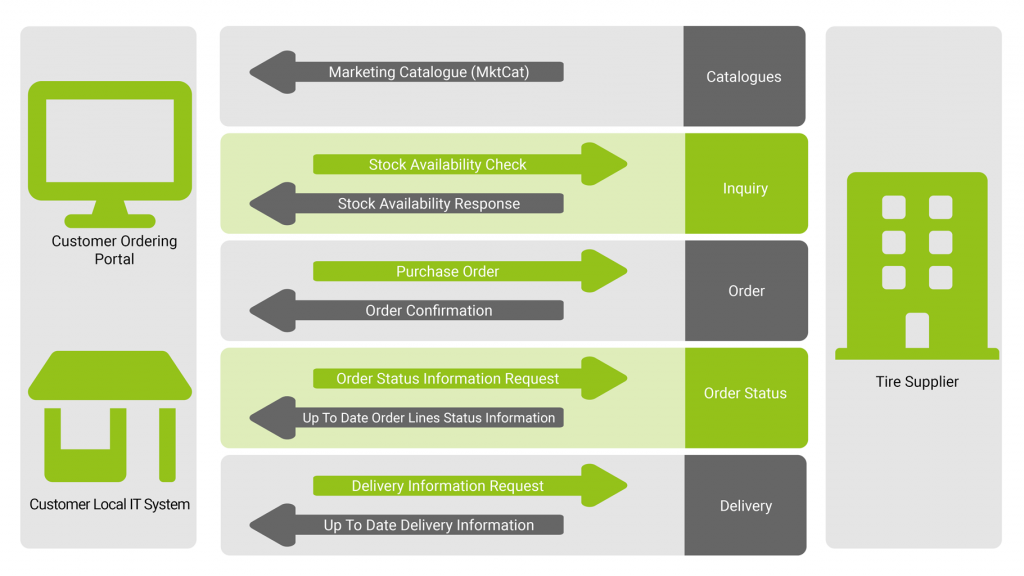
API offers a synchronous communication. Customer has an online connection to the supplier’s ERP and receives an immediate response to its request. Access to supplier’s ERP with URL, User ID and Password (provided by supplier).
It is used in the daily API business with small quantities and very quick reaction but can be used for seasonal orders, too (without availability check).
With the new C1 version be used for B2B, B2C and B2B2C processes and scenarios.
Detailed information can be found in the API documentation.
Traditional EDI
Traditional EDI is the preferred solution for the exchange big volume of data where no direct response is required.
For this data exchange protocols like OFTP2, AS2, SFTP are used and the type can be agreed with the supplier.
Detailed information can be found in the Traditional EDI documentation.
Billing
Two different billing processes can be used, depending on the internal set-up on customer side. Both processes can be used for a customer at the same time if internal billing on customer’s side allows it.
- Centralized billing or centralized flow:
In case that for car dealer or retail chains and fleets the billing process is done between customer’s headquarters and supplier, the centralized billing is used. - Direct billing or direct flow:
Direct billing is used for all billing processes which are done directly between customer and supplier.

